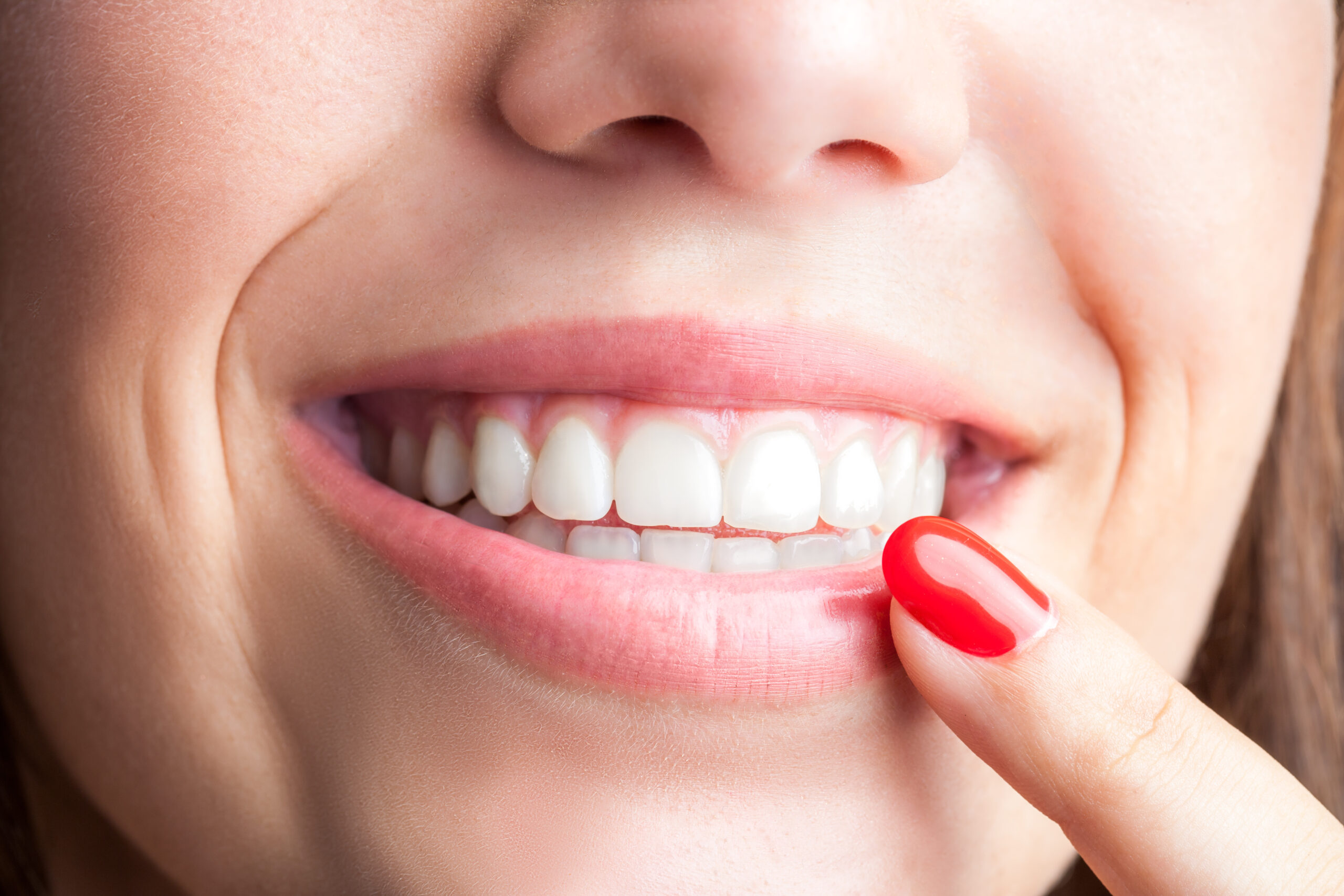
Extreme close up of woman pointing with finger at healthy teeth.
Whitening your teeth can improve your confidence and smile, but to avoid any potential problems, you must proceed cautiously. While done properly, teeth whitening can produce remarkable effects, there are a few basic errors that people frequently make. This post will go over three typical mistakes to avoid making while bleaching your teeth and offer helpful advice on how to have a healthier, brighter smile safely and efficiently.
Overusing Whitening Products
If you’re wondering “How often can you whiten your teeth?” it would be a good idea to do your research before starting your own teeth whitening journey. Many do not realize that overuse of whitening treatments is one of the most frequent blunders people make while trying to whiten their teeth. In an attempt to see results more quickly, it might be tempting to use bleaching toothpaste, strips, or trays more often than is advised. However, overuse can cause enamel damage, gum inflammation, and dental sensitivity. If used excessively, the abrasive and bleaching components in whitening treatments can wear off the enamel of the teeth and irritate the gums. This may eventually cause the teeth’s outer layer to deteriorate, leaving them more vulnerable to decay and hypersensitivity.
Pay close attention to the manufacturer’s recommendations and adhere to the suggested treatment period to prevent overusing whitening solutions. It’s essential to consider factors such as the concentration of bleaching agents and the sensitivity of your teeth when determining how often you can whiten your teeth. Stop using the product right away if you feel any discomfort or irritation, and seek guidance from your dentist if necessary. Additionally, to give your teeth a rest and avoid overexposure to bleaching chemicals, think about switching between whitening solutions and ordinary toothpaste.
Ignoring Pre-Existing Dental Issues
Ignoring previous dental conditions like cavities, gum disease, or sensitivity in the mouth is another typical error people make while trying to whiten their teeth. If whitening solutions are used without first treating underlying dental disorders, they may worsen these problems and result in discomfort or consequences. To find and cure any current oral health concerns, a comprehensive dental checkup must be had before beginning any teeth-whitening procedure. Based on your dental requirements and history, your dentist can examine the state of your gums and teeth, treat cavities or gingivitis, and provide customized suggestions for teeth whitening.
Overlooking pre-existing dental problems in favor of teeth whitening might result in gum irritation, increased sensitivity, or even irreversible damage to the gums and teeth. You can make sure that the procedure is safer, more pleasant, and produces the best results by taking care of these problems before bleaching your teeth.
Failing to Follow Post-Whitening Care
It’s essential to take the recommended after-whitening maintenance steps to preserve your results and stop stains or discoloration from happening again. One typical error, though, is disregarding post-whitening care guidelines, which include refraining from staining objects and meals, maintaining proper oral hygiene, scheduling routine dental examinations, and avoiding dark-colored foods and drinks, such as coffee, tea, red wine, and berries, right after teeth whitening is crucial since they can contaminate the teeth and affect the outcome. Furthermore, maintain proper dental hygiene by brushing and flossing regularly to get rid of plaque and stop new stains from appearing.
Attend routine dental examinations and cleanings in addition to following good nutrition and oral hygiene practices to keep an eye on your oral health and take quick care of any issues. To preserve the benefits of your teeth whitening procedure and to cure any fresh stains or discoloration, your dentist may offer expert cleanings and touch-up procedures. You may extend the durability of your results and continue to enjoy a more visible, whiter smile for years to come by carefully adhering to these post-whitening maintenance guidelines.
Conclusion
Although whitening your teeth may be a great method to brighten your smile and boost your self-esteem, it’s important to avoid common blunders that could harm your dental health and results. You may safely and successfully get a whiter smile by using the advice provided in this article and consulting your dentist. To preserve your results and safeguard your oral health, always use whitening solutions properly, take care of any underlying dental disorders before whitening, and practice good post-whitening hygiene. You may maintain the health and integrity of your gums and teeth while still benefiting from a bright smile with the appropriate strategy.


